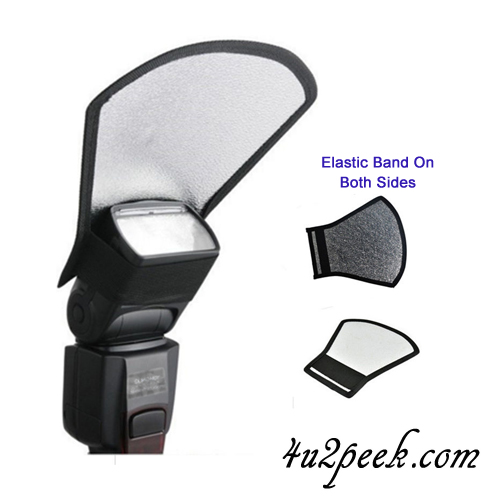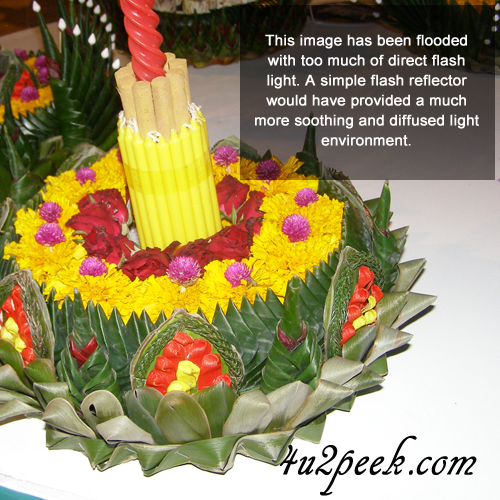Camera Flash Diffuser
 Most cameras these days come equipped with an internal flash. This is true of both compact digital cameras and DSLRs. When the camera happens to be in the Auto mode, the decision to shoot the flash can be taken by the camera itself. It is of course possible to set the flash settings as intended by you. When we talk about a flash light reflector, it is implied that an external flash that links to the camera is used. Cameras that can take external flash lights, should ideally have a socket (shoe) in the top.
Most cameras these days come equipped with an internal flash. This is true of both compact digital cameras and DSLRs. When the camera happens to be in the Auto mode, the decision to shoot the flash can be taken by the camera itself. It is of course possible to set the flash settings as intended by you. When we talk about a flash light reflector, it is implied that an external flash that links to the camera is used. Cameras that can take external flash lights, should ideally have a socket (shoe) in the top.
By adding an external flash to your camera, you have the capability to take better lit images. In a more technical sense, more light also allows higher shutter speed which can in turn, give sharper images. In this report reference to ‘flash’ or ‘camera flash’, will refer to an external flash attached to your camera. Attaching a simple reflector to the flash can further enhance the effectiveness of the device, the light reflector basically increases your control over the light emitted by the flash.
Picture a flash mounted on your camera with the light head, pointing straight at the subject in front of you. This flash angle is likely to bombard the subject with too much light, presuming that you are not too far away from the subject. Now swivel the head of the flash upwards at an angle of around 45 degrees to your subject, don’t expect miracles though. A tiny portion of the light might still reach the subject but most of it, would leak into space and be a total waste. The situation might be a bit different if, you happen to be in a room with a ceiling and walls around you. This can cause some of the escaped light to bounce back into your frame. It is unlikely that this reflected light would be sufficient to give you a well exposed image.
 Let’s see how a simple flash reflector costing no more than a few dollars, can help us get a more balanced light distribution. Maintain the same 45 degree angle on the flash head, strap the light reflector into place. When the flash does go on, a significant amount of light hits right into the protruding reflector. This light bounces back downwards, the total light can now work to light up the subject. You will need to try a few combinations of shutter speed and aperture to get the right exposure. Also experiment with a few different angles for the flash head. The bounced light is also a bit diffused and this means that, the subject will appear more natural and life like.
Let’s see how a simple flash reflector costing no more than a few dollars, can help us get a more balanced light distribution. Maintain the same 45 degree angle on the flash head, strap the light reflector into place. When the flash does go on, a significant amount of light hits right into the protruding reflector. This light bounces back downwards, the total light can now work to light up the subject. You will need to try a few combinations of shutter speed and aperture to get the right exposure. Also experiment with a few different angles for the flash head. The bounced light is also a bit diffused and this means that, the subject will appear more natural and life like.
Camera flash reflectors come in a few forms, you will not need anything too elaborate so keep it simple and neat. Most light reflectors that mount on a flash, can be used on both sides. You would see a high polish metallic finish on one side and a plain white sheet on the other. Make sure that the flash reflector that you choose has these two sided functionality, experiment with both sides once you get the piece.
You can shop online for your light reflector, prices are competitive and you will find a range of styles to choose from. Some camera accessory shops do stock reflectors but, don’t expect much variety in such places. If you end up choosing a flash reflector online at a bargain price, consider picking one or more additional pieces. This will ensure that you always have one ready, the shipping charges will also prove to be more reasonable.